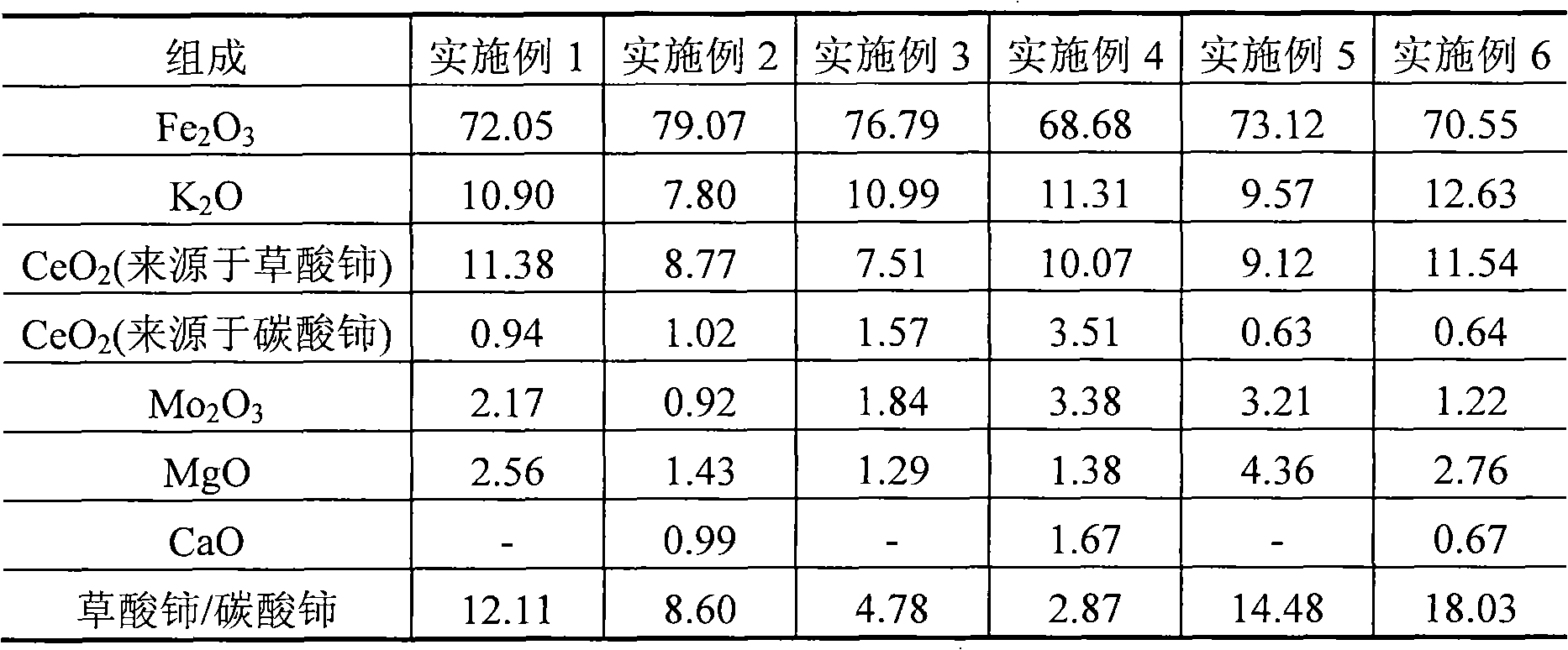Method for preparing styrene by dehydrogenation of ethylbenzene
A technology for ethylbenzene dehydrogenation and styrene, applied in chemical instruments and methods, hydrocarbons, hydrocarbons, etc., can solve the problems of decreased stability and insufficient mechanical strength of catalysts, and achieve high mechanical strength, high activity and high performance. Selectivity, the effect of increasing alkalinity
- Summary
- Abstract
- Description
- Claims
- Application Information
AI Technical Summary
Problems solved by technology
Method used
Image
Examples
Embodiment 1
[0027] Put 212.0 grams of iron oxide red, 80.0 grams of iron oxide yellow, 60.0 grams of potassium carbonate, 88.0 grams of cerium oxalate, 7.2 grams of cerium carbonate, 10.0 grams of ammonium molybdate, 9.6 grams of magnesium oxide and 20.5 grams of carboxymethyl cellulose in a kneader Stir for 1 hour, add deionized water, stir for another half an hour, take out the extruded strips, extrude them into particles with a diameter of 3 mm and a length of 5 to 10 mm, put them in an oven, bake at 80°C for 2 hours, and at 120°C for 2 hours, then place In a muffle furnace, calcined at 850°C for 4 hours to obtain the finished catalyst.
[0028] The mechanical strength of the catalyst was measured, and the test results are listed in Table 1.
[0029] 100 milliliters of catalysts are loaded into the reactor, at normal pressure, liquid space velocity 1.0 hours -1 , 620°C, and water vapor / ethylbenzene (weight ratio) of 2.0 for activity evaluation, the test results are listed in Table 1. ...
Embodiment 2
[0031] Prepare catalyst by the method for embodiment 1, difference is 212.0 gram iron oxide red, 183.0 gram iron oxide yellow, 52.0 gram potassium carbonate, 82.0 gram cerium oxalate, 9.5 gram cerium carbonate, 5.1 gram ammonium molybdate, 6.5 gram magnesium oxide , 8.0 grams of calcium carbonate and 18.1 grams of carboxymethyl cellulose.
[0032] Activity evaluation and mechanical strength determination were carried out according to the evaluation conditions of Example 1, and the test results are listed in Table 1.
Embodiment 3
[0034] The catalyst is prepared according to the method of Example 1, except that 282.0 grams of iron oxide red, 103.5 grams of iron oxide yellow, 75.0 grams of potassium carbonate, 72.0 grams of cerium oxalate, 15.0 grams of cerium carbonate, 10.5 grams of ammonium molybdate, 6.0 grams of oxide Magnesium and 20.0 g methylcellulose
[0035] Activity evaluation and mechanical strength determination were carried out according to the evaluation conditions of Example 1, and the test results are listed in Table 1.
PUM
| Property | Measurement | Unit |
|---|---|---|
| length | aaaaa | aaaaa |
Abstract
Description
Claims
Application Information
 Login to View More
Login to View More - R&D
- Intellectual Property
- Life Sciences
- Materials
- Tech Scout
- Unparalleled Data Quality
- Higher Quality Content
- 60% Fewer Hallucinations
Browse by: Latest US Patents, China's latest patents, Technical Efficacy Thesaurus, Application Domain, Technology Topic, Popular Technical Reports.
© 2025 PatSnap. All rights reserved.Legal|Privacy policy|Modern Slavery Act Transparency Statement|Sitemap|About US| Contact US: help@patsnap.com



